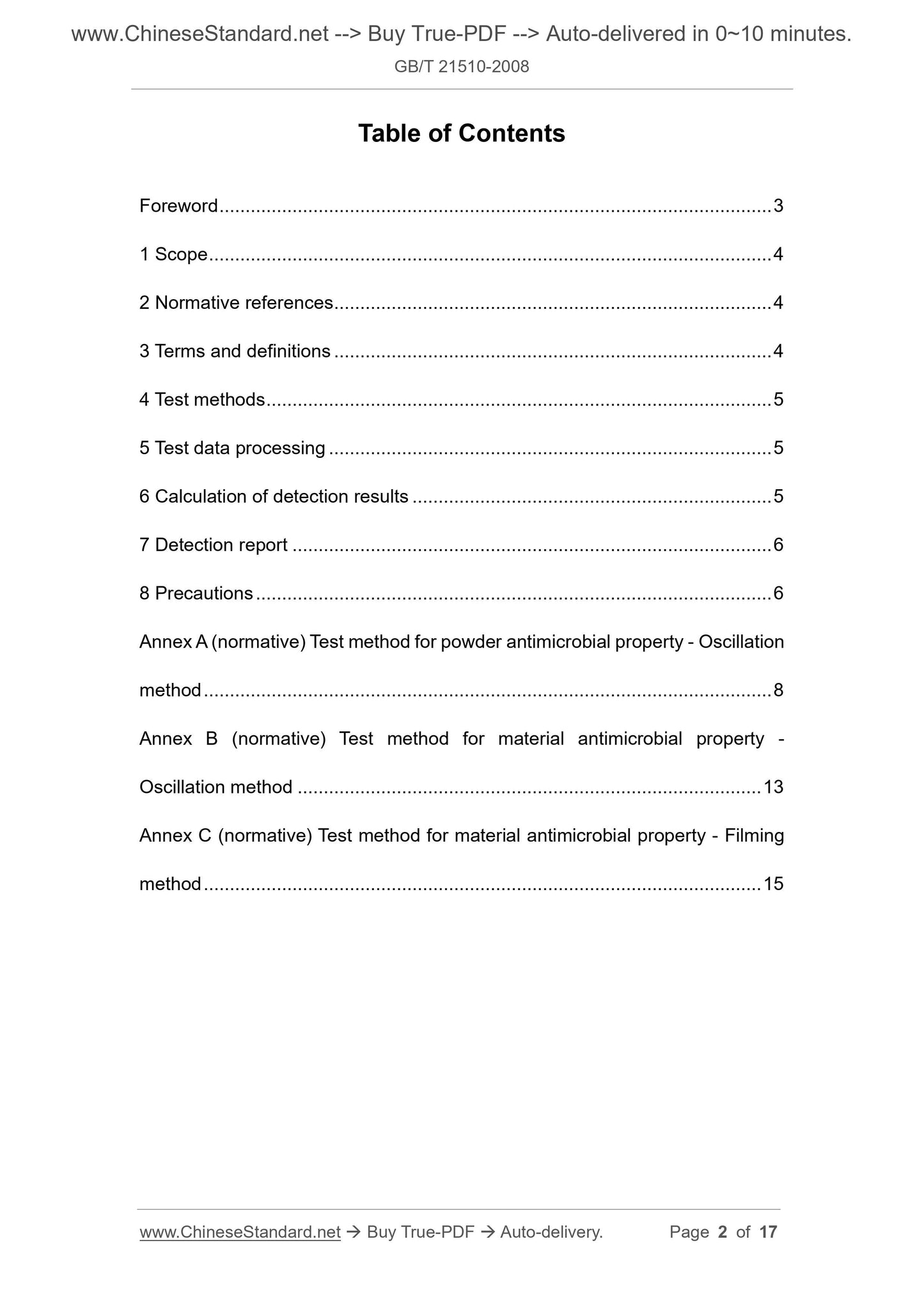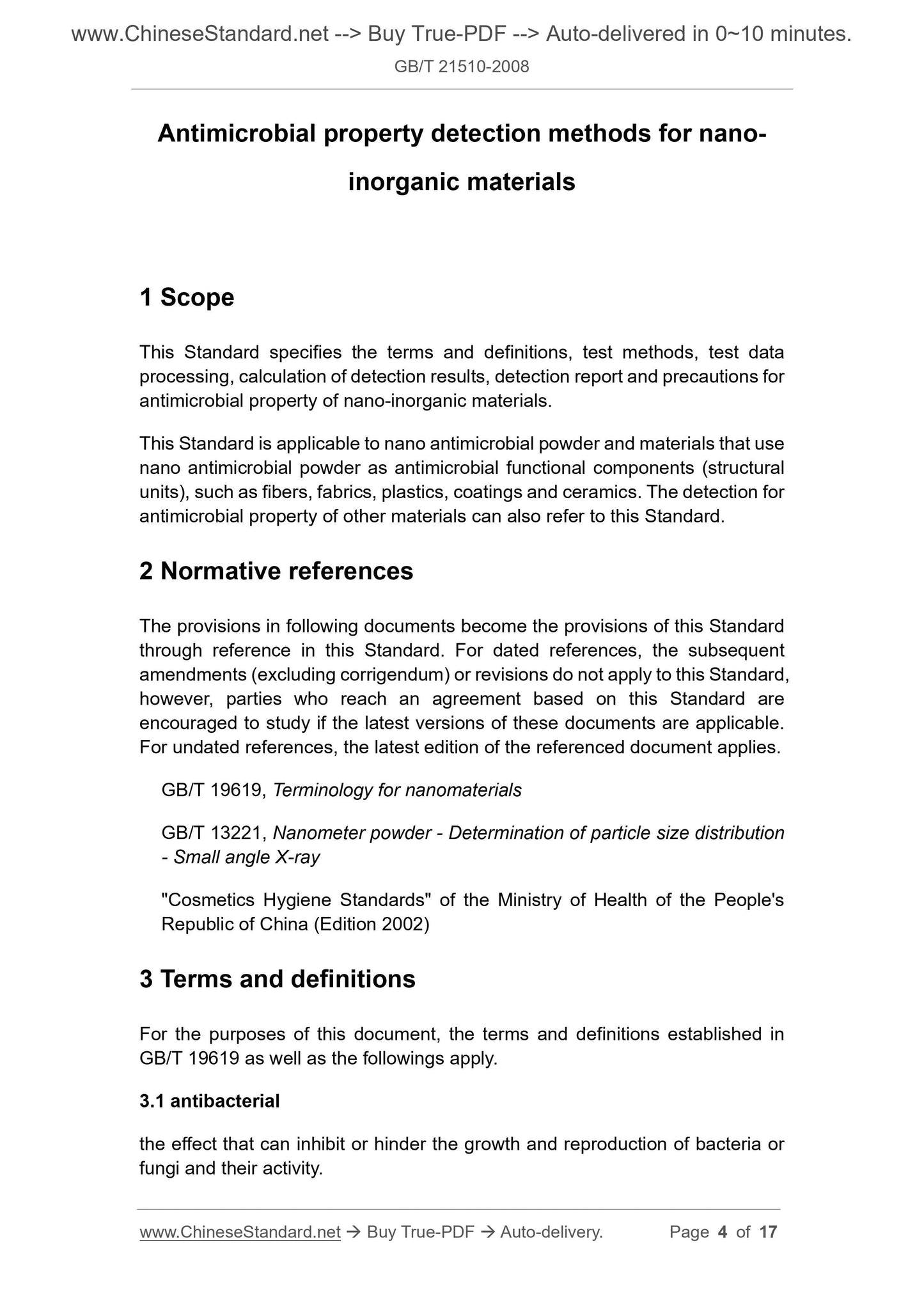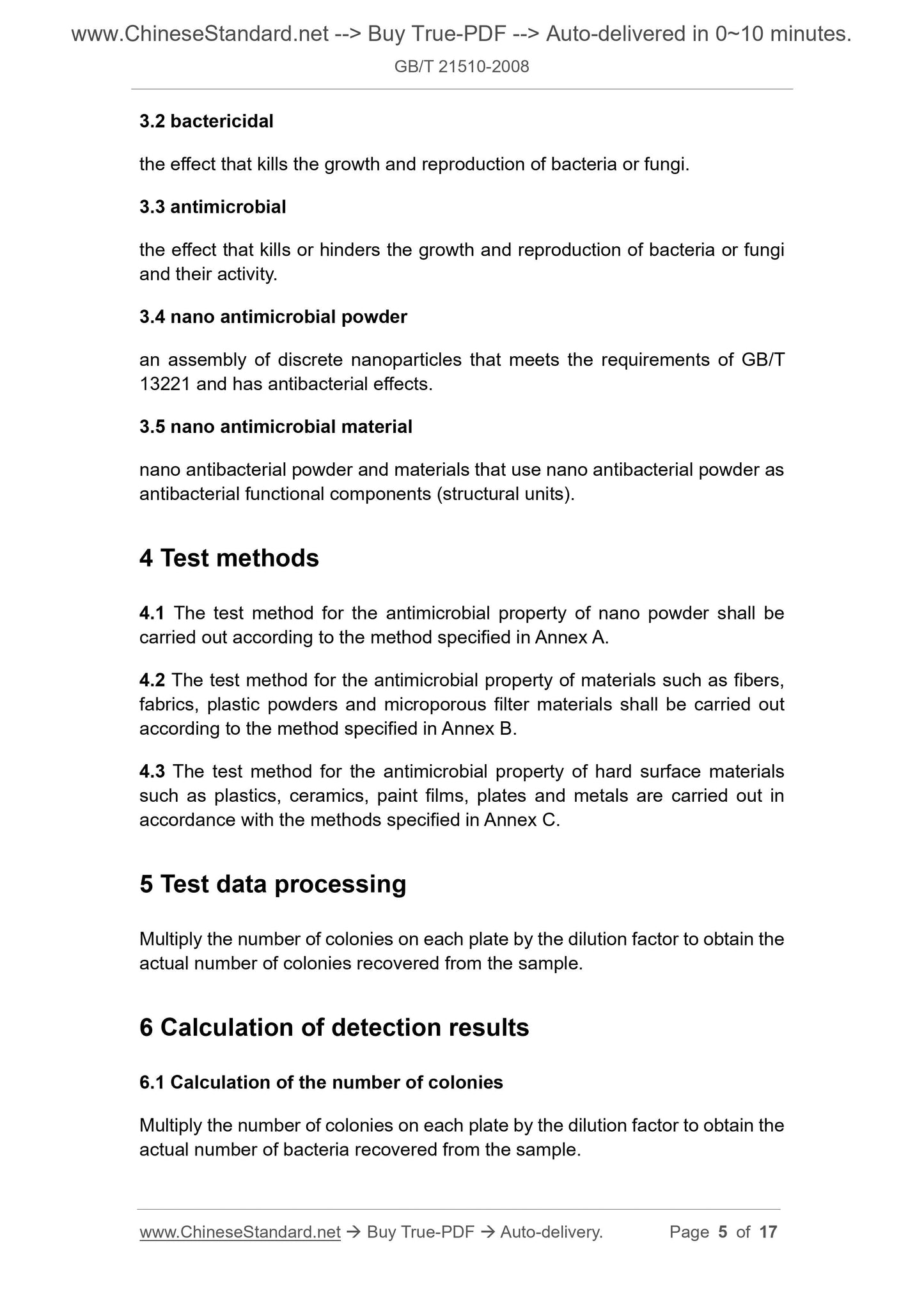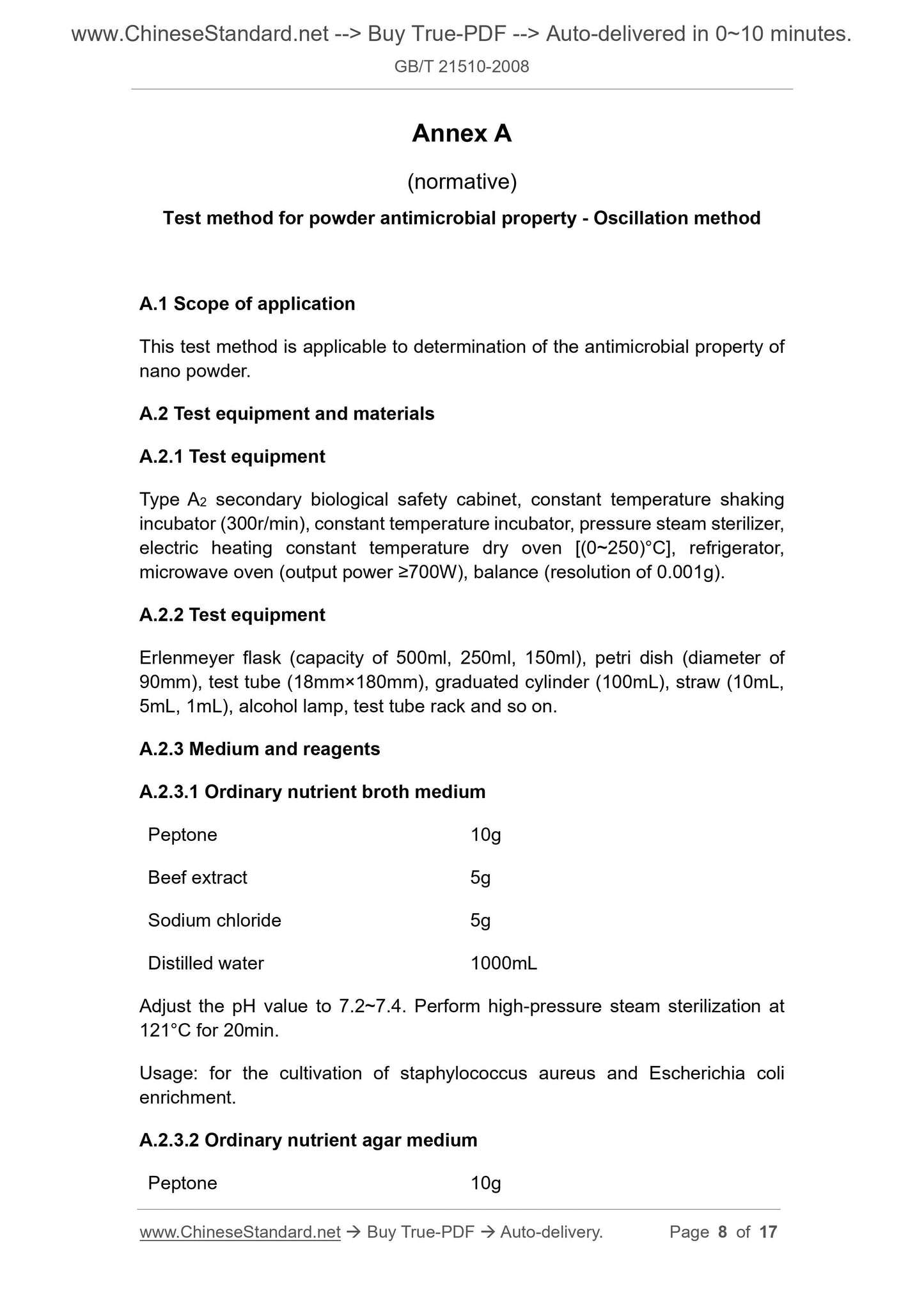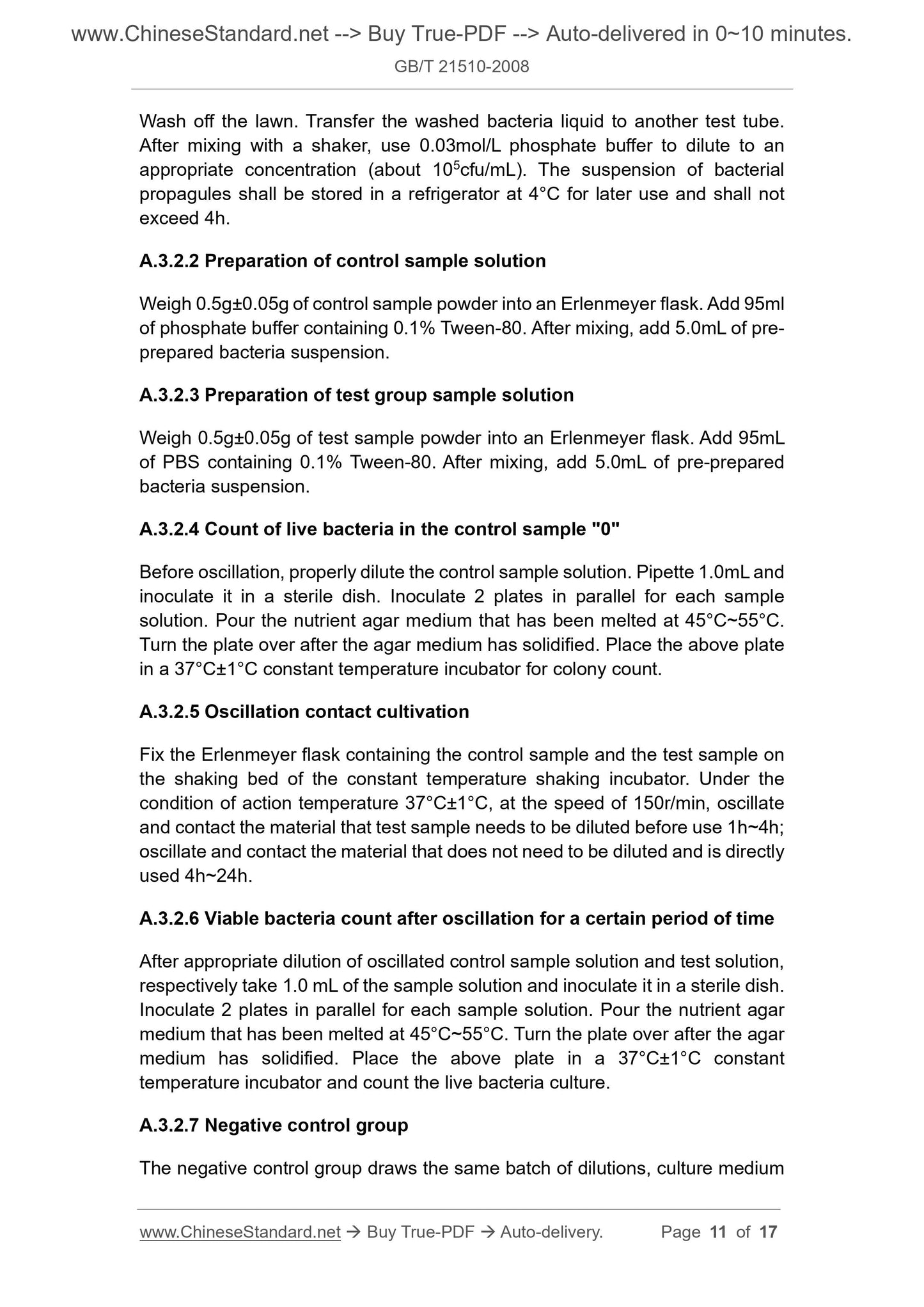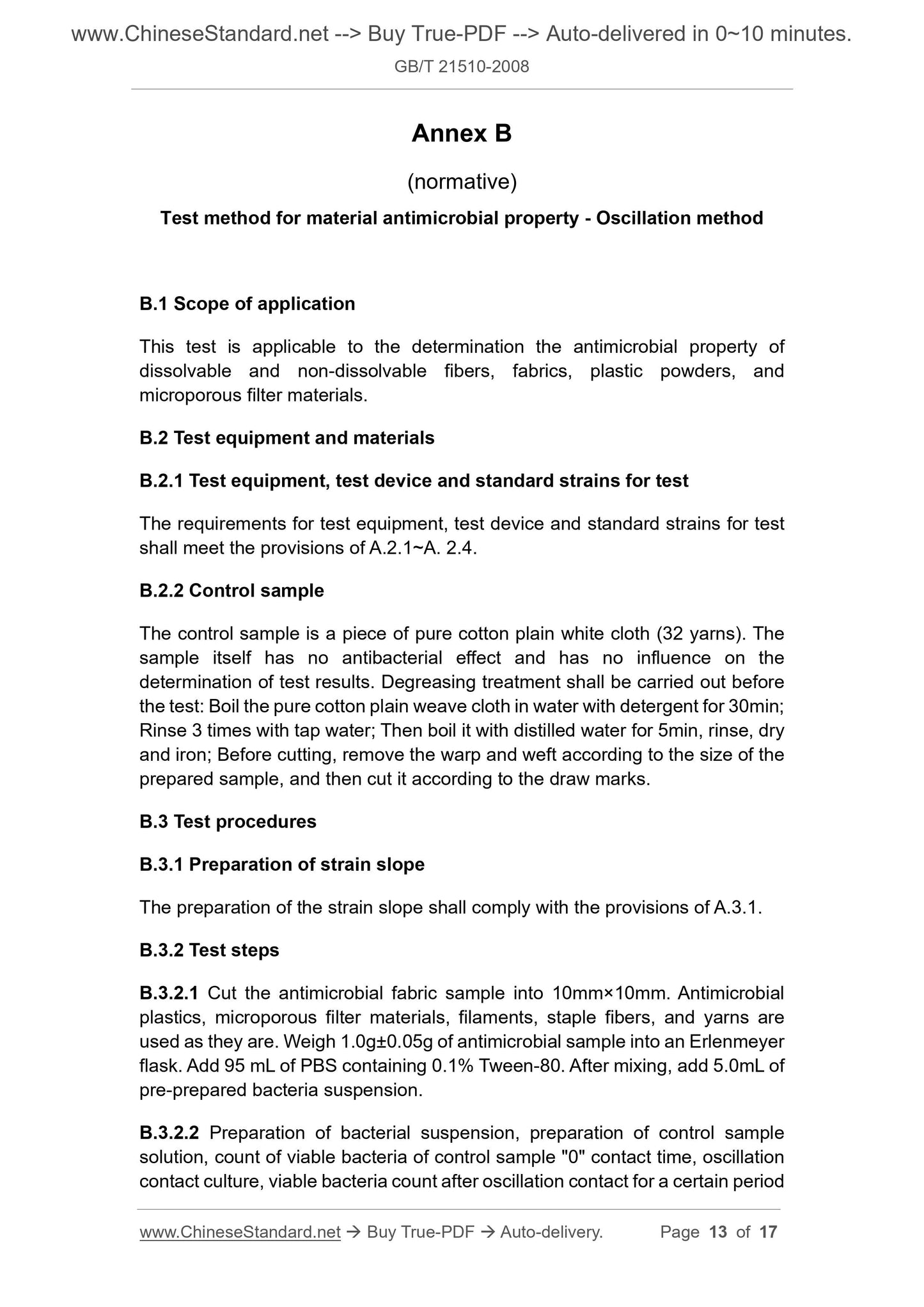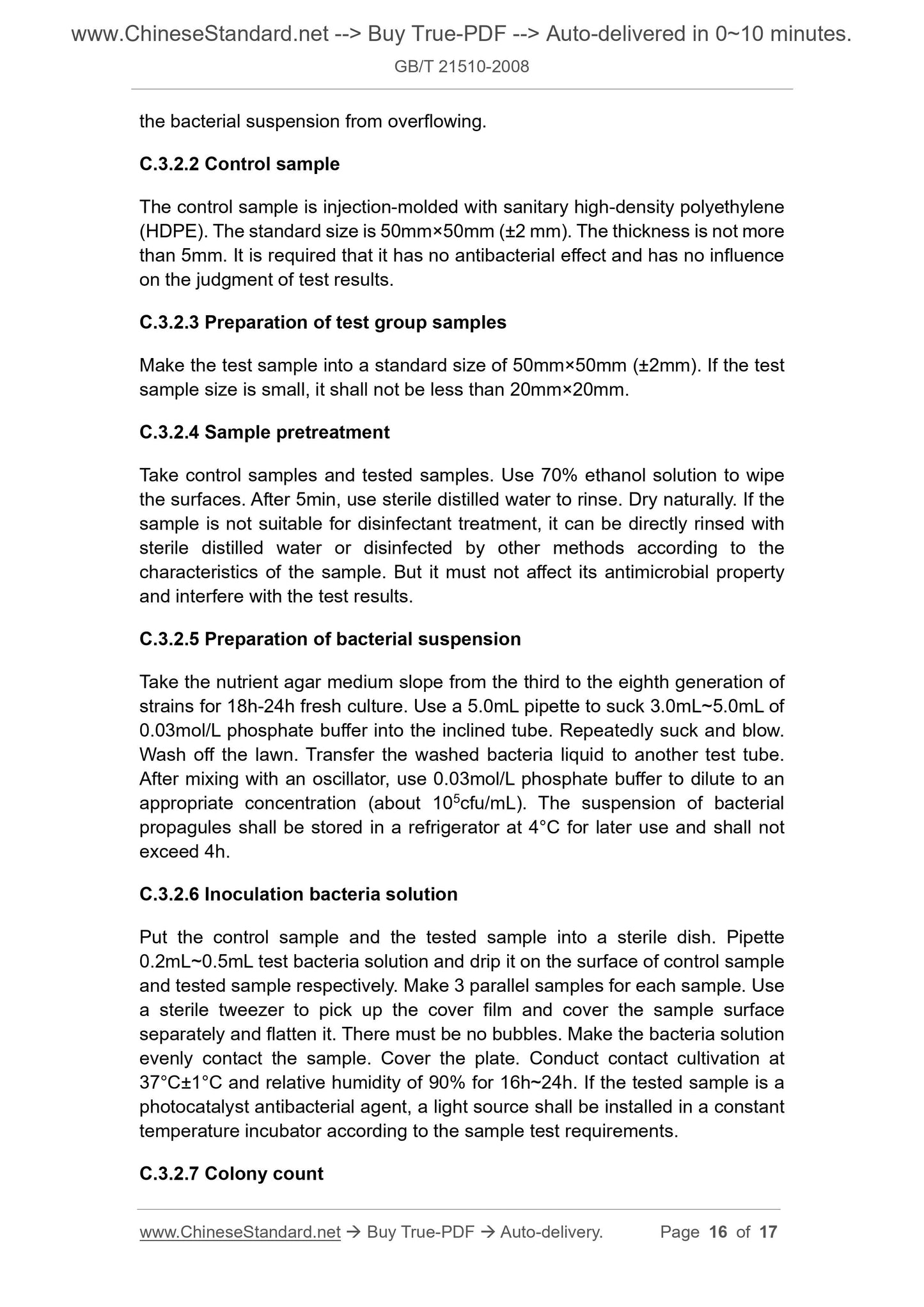1
/
of
8
www.ChineseStandard.us -- Field Test Asia Pte. Ltd.
GB/T 21510-2008 English PDF (GB/T21510-2008)
GB/T 21510-2008 English PDF (GB/T21510-2008)
Regular price
$150.00
Regular price
Sale price
$150.00
Unit price
/
per
Shipping calculated at checkout.
Couldn't load pickup availability
GB/T 21510-2008: Antimicrobial property detection methods for nano inorganic materials
Delivery: 9 seconds. Download (and Email) true-PDF + Invoice.Get Quotation: Click GB/T 21510-2008 (Self-service in 1-minute)
Newer / historical versions: GB/T 21510-2008
Preview True-PDF
Scope
This Standard specifies the terms and definitions, test methods, test dataprocessing, calculation of detection results, detection report and precautions for
antimicrobial property of nano-inorganic materials.
This Standard is applicable to nano antimicrobial powder and materials that use
nano antimicrobial powder as antimicrobial functional components (structural
units), such as fibers, fabrics, plastics, coatings and ceramics. The detection for
antimicrobial property of other materials can also refer to this Standard.
Basic Data
| Standard ID | GB/T 21510-2008 (GB/T21510-2008) |
| Description (Translated English) | Antimicrobial property detection methods for nano inorganic materials |
| Sector / Industry | National Standard (Recommended) |
| Classification of Chinese Standard | G70 |
| Classification of International Standard | 11.080.99 |
| Word Count Estimation | 11,152 |
| Date of Issue | 2008-03-13 |
| Date of Implementation | 2008-08-01 |
| Quoted Standard | GB/T 19619; GB/T 13221; Ministry of Health " Hygienic Standard for Cosmetics " |
| Regulation (derived from) | National Standard Approval Announcement 2008 No.3 (Total No.116) |
| Issuing agency(ies) | General Administration of Quality Supervision, Inspection and Quarantine of the People's Republic of China, Standardization Administration of the People's Republic of China |
| Summary | This standard specifies the terms and definitions antibacterial properties of inorganic nanomaterials, test methods, experimental data processing, detection result of the calculation, test reports and precautions. This standard applies to nano- powders and nano- antibacterial antibacterial antibacterial powder functional components (structural units) of the material, such as fibers, fabrics, plastics, coatings and ceramics. Antibacterial performance testing of other materials can also perform reference to this standard. |
Share

